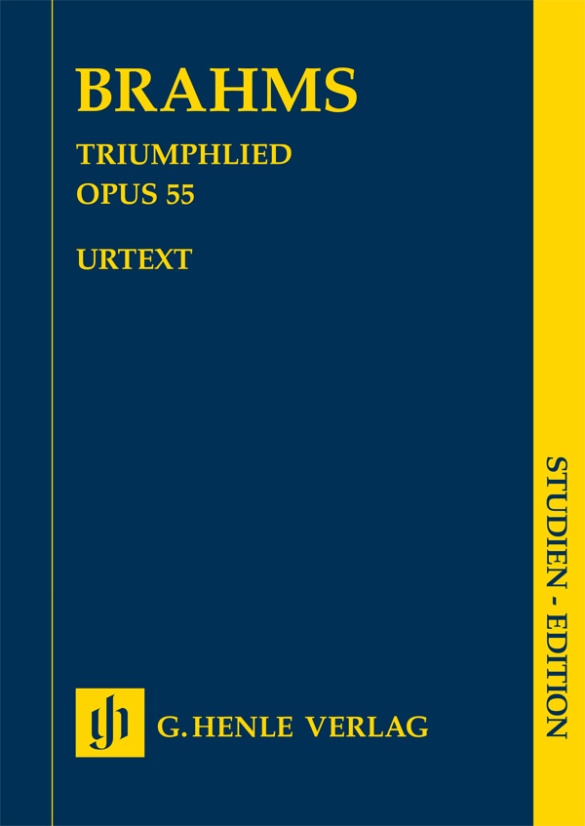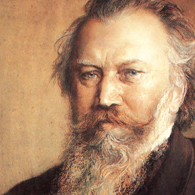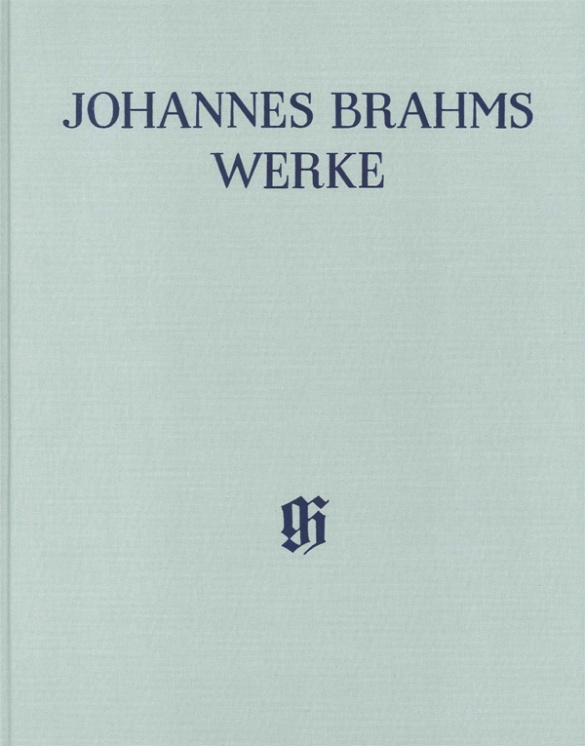

Johannes Brahms
Triumphlied op. 55
Brahms composed his Triumphlied for eight-part chorus, solo baritone and orchestra as a direct reaction to the victory of the German army in the Franco-Prussian War of 1870/71 and the consequent founding of the German Empire. Similar to the German Requiem completed shortly before, Brahms himself compiled the text from the Bible, in this case from Chapter 19 of the Book of Revelations. Because of the somewhat melodramatic tone of the composition and the nationalistic background to the work’s genesis, in recent years the Triumphlied has seldom been heard in concert halls. Unlike overly-patriotic occasional works such as Richard Wagner’s Kaisermarsch, the Triumphlied is “true Brahms” and is a musically rich composition. This study edition takes the musical text from the Brahms Complete Edition (HN 6030), thereby representing the highest scholarly precision. The Appendix contains an exciting new discovery, a previously-unknown early version of the 1st movement in C major, which was only rediscovered in 2012 in Bremen.
Content/Details
About the Composer

Johannes Brahms
His significant output comprises chamber music, piano works, numerous choral compositions and songs (including settings of folk-song lyrics), as well as large-scale orchestral works in the 1870s and 1880s. His compositions are characterized by the process of developing variation. He is considered an antithesis to the New German School around Liszt, and an advocate of “absolute” music.
| 1833 | Born in Hamburg on May 7, the son of a musician. His first piano instruction with Willibald Cossel at age seven, then with Eduard Marxen; first public performances from 1843. |
| 1853 | Concert tour through German cities; he meets Schumann, who announces him as the next great composer in his essay “Neue Bahnen” (“New Paths”). A lifelong, intimate friendship develops with Clara Schumann. |
| 1854–57 | Piano Concerto No. 1 in D minor, Op. 15. |
| 1857–59 | Choir director, pianist, and teacher at the royal court in Detmold. |
| 1859–61 | Director of the Hamburg Women’s Choir. |
| 1860 | Manifesto against the New Germans around Liszt. |
| 1863 | Cantata “Rinaldo,” Op. 50. |
| 1863–64 | Director of the Wiener Singakademie. |
| 1868 | Partial performance in Vienna of “A German Requiem,” Op. 45 (the complete work premiered in Leipzig in 1869) |
| 1871–74 | Artistic director of the Gesellschaft der Musikfreunde (Society of Friends of Music) in Vienna. |
| 1873 | Haydn Variations, Op. 56a, for orchestra. |
| from 1877 | His symphonic output begins with the Symphony No. 1 in C minor, Op. 68 (begun 1862); composition of the Symphony No. 2 in D major, Op. 73; the Symphony No. 3 in F major, Op. 90 (1883); and Symphony No. 4 in E minor, Op. 98 (1884–85): cantabile themes, chamber-music-like style. |
| from 1878 | Travels in Italy. |
| 1878 | Violin Concerto in D major, Op. 77, for Joseph Joachim. |
| 1881 | Piano Concerto No. 2 in B-flat major, Op. 83, with a scherzo movement. |
| 1886 | Honorary president of Vienna’s Tonkünstlerverein (Association of Musicians). |
| 1897 | Four Serious Songs, Op. 121. Dies in Vienna on April 3. |
Product Safety Informations (GPSR)

G. Henle Verlag
Here you can find the information about the manufacturer of the product.G. Henle Verlag e.K.
Forstenrieder Allee 122
81476 München
Germany
info@henle.de
www.henle.com
La présente partition d‘étude, réalisée sous la direction de Johannes Behr et Ulrich Tadday reprend le texte musical de l’édition intégrale des œuvres de Brahms (HN 6030), garant d’une exactitude scientifique. Une passionnante découverte figure en annexe : une version précoce du premier mouvement, en Ut majeur, inconnue jusqu’alors et découverte à Brême en 2012 seulement.
Crescendo Magazine online, 2023推荐
autogenerated_cross_selling


